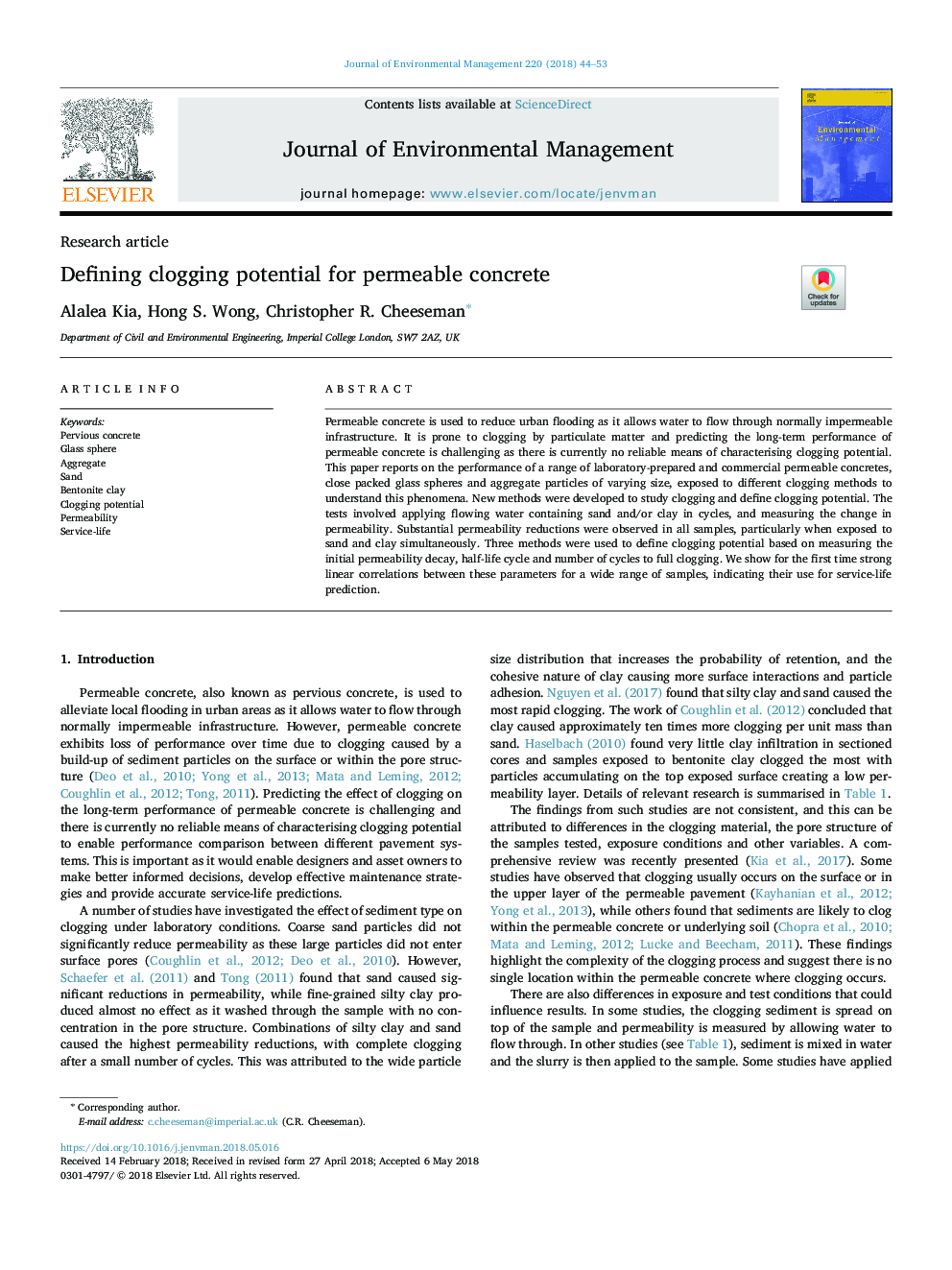| Article ID | Journal | Published Year | Pages | File Type |
|---|---|---|---|---|
| 7476405 | Journal of Environmental Management | 2018 | 10 Pages |
Abstract
Permeable concrete is used to reduce urban flooding as it allows water to flow through normally impermeable infrastructure. It is prone to clogging by particulate matter and predicting the long-term performance of permeable concrete is challenging as there is currently no reliable means of characterising clogging potential. This paper reports on the performance of a range of laboratory-prepared and commercial permeable concretes, close packed glass spheres and aggregate particles of varying size, exposed to different clogging methods to understand this phenomena. New methods were developed to study clogging and define clogging potential. The tests involved applying flowing water containing sand and/or clay in cycles, and measuring the change in permeability. Substantial permeability reductions were observed in all samples, particularly when exposed to sand and clay simultaneously. Three methods were used to define clogging potential based on measuring the initial permeability decay, half-life cycle and number of cycles to full clogging. We show for the first time strong linear correlations between these parameters for a wide range of samples, indicating their use for service-life prediction.
Related Topics
Physical Sciences and Engineering
Energy
Renewable Energy, Sustainability and the Environment
Authors
Alalea Kia, Hong S. Wong, Christopher R. Cheeseman,
